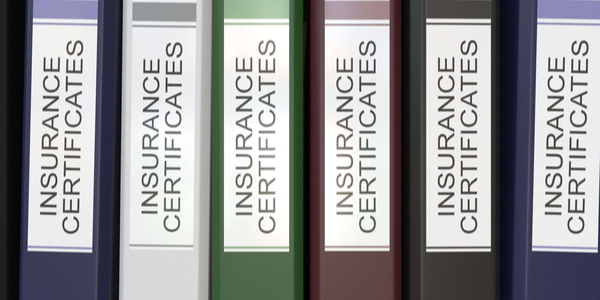
A certificate of insurance or COI is a documented proof of the fact that a person has an insurance coverage. This is a piece of information asked by stakeholders involved during a partnership. This assures them that partnering with a particular person is not risky as they will not have to compensate to the person in case of any accidents or any untoward incidents during the partnership.
It is not an easy task to accommodate all the details that take multiple pages within a single piece of paper. Moreover, this certificate is just an overview of basic terms in the policies at the time those were issued. An insurance certificate cannot be considered as an insurance policy in itself. Neither can any terms be changed in this document.
Such difficulties create cracks through which errors and omissions slip into certificates of insurance.
Factors Leading to Errors and Omissions in an Insurance Certificate
It is extremely strenuous and complicated to handle certificates of insurance that are prone to critical errors and omissions. Here’s looking at the factors that cause errors or omissions in COIs.
Status of Addition Insured
Certificate holders often see themselves enlisted as an additional insured in a certificate of insurance but not on the policy coverage. Or the insurance certificate mentions a person as an additional insured who actually was not intended to.
There are two reasons for the errors mentioned above. Firstly, agents often misrepresent actual policy coverage. They often receive such requests from the policyholders who use this additional insured status to coax their way into a partnership.
Secondly, human agents receive numerous requests to add parties as additional insureds. This makes them gullible to commit mistakes like entering the wrong person’s name in certificates of insurance.
Unreasonable Requests
Insurance agents often face requests from insureds to provide certificate of insurance for business in response to a contract. Deadlines to provide such COIs are typically very stringent.
At times, insurance agents oblige to such requests to avoid losing the policyholder’s account. This results in false impression of coverage in the certificate.
According to an article by IRMI, the Independent Insurance Agents and Brokers of America (IIABA) had passed a law across 45 US states. This law states that it is illegal to misrepresent facts in a COI. It is equally illegal to request agents to misrepresent insurance coverages.
Confusions on Wordings
A certificate of insurance is characterized with limited wordings and jargon which can be easily misinterpreted by certificate holders. This is why they must take the responsibility to explain the capacity and limitations of a COI.
However, most of the insurance carriers rely on agents to disburse an insurance certificate. The failure of such agents to explain certificate limitations has far reaching impacts.
For instance, an insurer is not obligated to send notice of cancellation to certificate holders which is why they term it as “will endeavor” in the COI. But certificate holders misinterpret it as an obligation. Upon denied, they wrongly raise an error and omission litigation.
Suboptimal Contract Review
Policyholders often request their agents to review their construction contract to determine the type of coverages required to satisfy the contract requirements.
Construction contracts are typically huge and quite complicated. Agents with minimal or zero legal training dealing with such complicated documents increase chances of errors. Such errors expose contractors as well as the insurance carriers to litigations.
How to Avoid Errors and Omissions in Certificates of Insurance
Here’s a quick guide about how insurers can minimize chances of errors and omissions in certificates of insurance to a significant extent.
- Insurers must carefully examine the relationship of the insured with the other stakeholders involved in a contract. They must tally the contract requirements with the active insurance policy limits. It will help insurers to understand whether the insured will require a blanket endorsement. This measure eliminates the chances of any ad-hoc alteration request by insureds in COIs.
- It is critical that insurers notify both the certificate holders and insured about the fact that they are not obligated to send notice of cancellation to the former. They must establish a process flow that ensures that notices are sent to the right person whenever deemed necessary.
- Errors and omissions occur due to inappropriate entering of details in a certificate of insurance for business. Therefore, insurers must bank on a checklist to ensure there are no omissions. The best way out is to do a quality check.
| Best Practices to Avoid Errors Properly enter the name and other details of the insureds and additional insureds in the certificate. Ensure that the coverage status of the insured is active till the end of the contract partnership. The endorsements must be concurrent with the insurance carrier’s current policy. Scrutinize all blanket endorsements and avoid limited wordings and jargons that create confusion in the extent of coverage for the insured. |
How We Take Out the Stress of Issuing an Error-free Certificate of Insurance
The task of issuing a certificate of insurance is very time-consuming and tedious. An insurer has to go through thousands of pages and accommodate every single term within a page. On top of it, insurance professionals receive multiple such requests in a day. It is hard to fulfill such requests efficiently when they are already stretched between other critical tasks of curating and disbursing policies to their customers.
There’s no gain for insurers in issuing certificates of insurance, however obliging the insureds with one boost insurers’ goodwill.
We help you overcome all the challenges faced during COI issuance and avoid having any liability pitfalls.
Our experts begin the process by creating a repository of all the data related to an insured’s contract. This allows the insured to constantly review and tally the information with those provided in the COI. This will deter them from raising requests that are off the limits of an insurer.
We conduct a multi-tier evaluation of blanket endorsements. Our experts ensure to keep away from using the wrong words that will lead insureds or certificate holders to mistake certificates of insurance for an actual policy endorsement.
COI management is an essential part of our help. We maintain an active channel to handle all COI-related queries.
Insurers can entrust the task of COI validation on us. We dedicate insurance professionals who keep a keen eye on policies that are set to expire. This places insurers in a position to help insureds avoid contract violation or denied claims.
Who We Are and Why Are We Considered as An Industry Expert?
This article is authored by experts at Insurance Back Office Pro, a pioneering certificate of insurance (COI) company. We bank on licensed and experienced professionals and advanced technology to help insurers compliant certificate of insurance for business. Our scopes of services include COI processing, management, compliance verification, and others.






